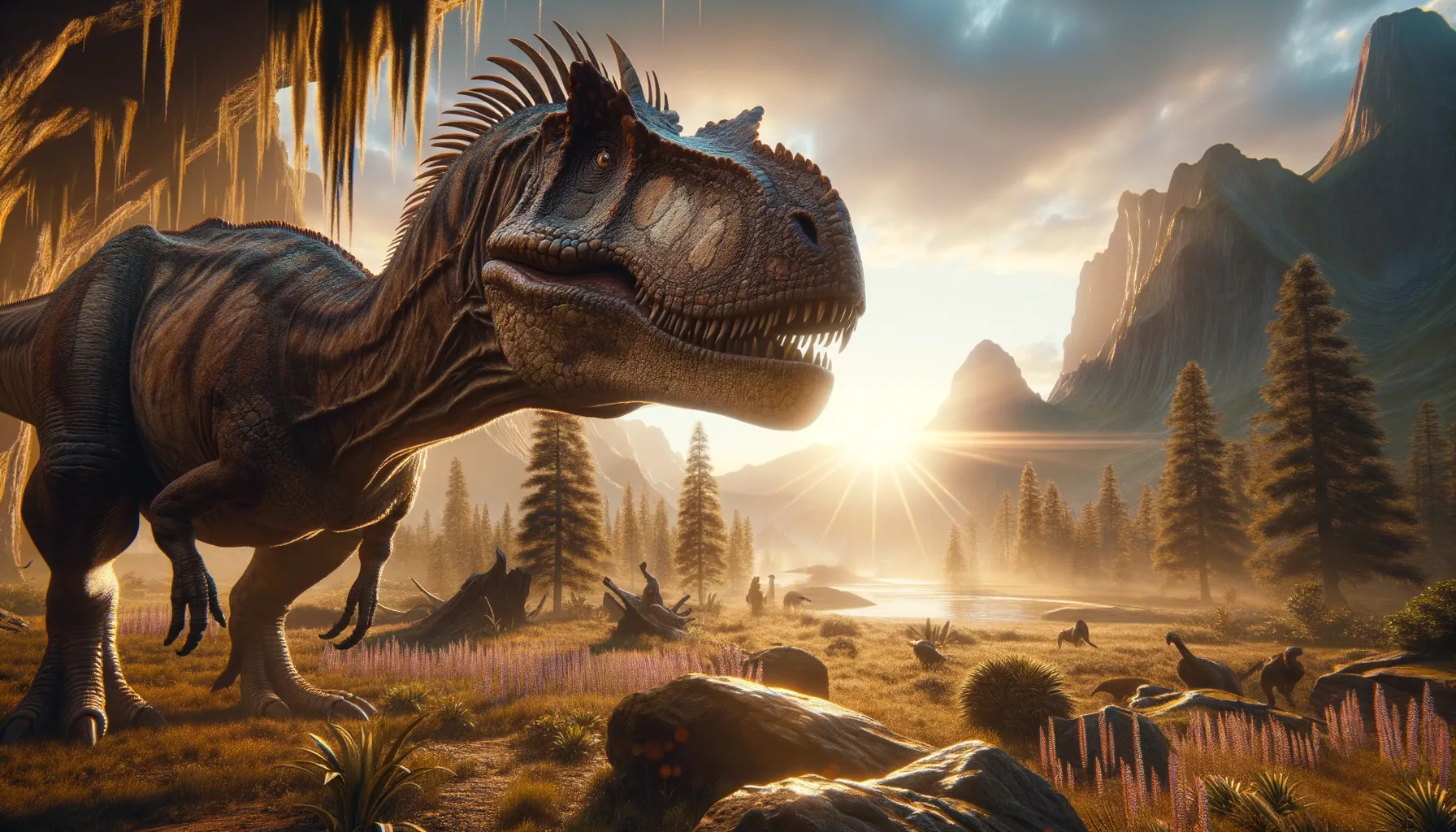
Siats
A gigantic predator from the ancient world.
Period
Cretaceous
Length
Measured up to 40 feet in length.
Height
Could stand roughly 10 feet tall at the hips.
Weight
Estimated to weigh between 2 to 4 tons.
Siats was a massive carnivorous dinosaur from the Late Cretaceous period. It roamed the areas of what is now North America and is known for its significant size and predatory capabilities. This giant predator was part of the carcharodontosaurid group, sharing its lineage with some of the largest meat-eating dinosaurs. Its discovery has helped paleontologists understand more about the apex predators of ancient ecosystems during its time.
Diet
Siats was a carnivore, mainly feeding on large herbivorous dinosaurs. It likely targeted animals such as hadrosaurs and ceratopsians, using its massive size to overpower and capture prey.
Hunting
It likely hunted alone, relying on stealth and strength to ambush its prey. As an apex predator, it dominated its environment, with few natural threats challenging its hunting prowess.
Environmental challenges
Siats lived during a time of dynamic climatic shifts, which often affected the availability of prey. This required it to adapt its hunting strategies based on seasonal changes. The Late Cretaceous also saw increased competition from other large carnivores and smaller theropods. Such competition could have impacted its food sources, forcing it to roam across greater distances.
Speed
It was likely a fast runner among predators of its size.
Lifespan
Estimated to have lived for around 20 to 30 years.
First discovery
Discovered in Utah, USA, in 2008.
Fun Facts
- Siats was a massive predatory dinosaur that lived about 98 million years ago during the Late Cretaceous period.
- It was discovered in what is now known as Utah in the United States, highlighting how ecosystems were similar across continents during ancient times.
- Siats is named after a mythological monster from the Native American Ute tribe's folklore, emphasizing its fearsome reputation.
- This dinosaur was one of the top predators of its time, before the rise of the more famous Tyrannosaurus rex.
- Siats belonged to a group of dinosaurs known as carcharodontosaurs, which were characterized by their large size and sharp teeth.
- The discovery of Siats has helped paleontologists learn more about the diverse and complex ecosystems of North America millions of years ago.
Growth and Development
Siats grew rapidly during its early life stages, reaching adult size quickly to reduce vulnerability to predators. Juveniles likely led a more secretive lifestyle, avoiding confrontation with larger predators until they could fend for themselves. The development phase possibly included significant physical and behavioral changes to optimize hunting efficiency.
Habitat
It favored forested environments and floodplains, which supported a diverse range of prey species. These areas provided ample cover for ambushing prey and suitable conditions for nesting. The climatic conditions of the Late Cretaceous provided warm temperatures, essential for Siats' ectothermic metabolism.
Interaction with other species
Siats had few competitors, but it occasionally encountered large theropods, leading to confrontations over territory or food. It might have driven away smaller predators from its kills, asserting its dominance over its environment. The presence of herbivorous herds likely influenced its behavioral patterns, with migration paths dictating hunting strategies.
Natural lifespan
Siats likely lived up to 30 years in optimal conditions.
Reproduction
Siats likely laid eggs, with nests placed in hidden areas to protect from predators. Hatchlings required several years of development, with parental care unknown but possibly limited. Reproductive strategies would have ensured survival without high parental investment.
Social behaviour
It may have lived a solitary life, with interactions primarily during mating season. Fighting among males for mates might have been common, with displays of strength and size important for success. Napoléons likely established territories to secure access to food resources.
Fossil locations
Fossils have been primarily found in the Cedar Mountain Formation in Utah. These findings have helped provide a clearer picture of the region's ancient ecosystems. The discoveries are crucial for understanding the faunal succession and predator-prey dynamics in North America during the Cretaceous period.
